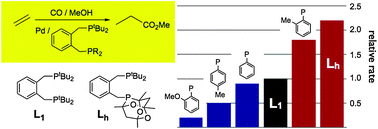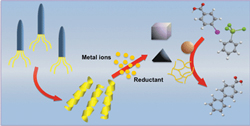Looking briefly over the year in Catalysis Science & Technology we can see an interesting area of research has been in the generation of Biodiesel, a particularly interesting prospect given recent hikes in fuel prices and the seasonal drop in temperature in the Northern Hemisphere. Bert Sels et al. gave an interesting Perspective ‘Chemocatalytic conversion of cellulose: opportunities, advances and pitfalls’, which outlines the great chemical potential locked up in cellulose such as sugars, hexitols, ethylene glycol, gluconic acid and biofuels. Unlocking these valuable chemicals is a hot topic for research in catalysis but as you can see in their article there are several catalytic steps required and this can be expensive.

A route to making biodiesel more financially favourable is to use cheaper raw materials, but these can contain high levels of free fatty acids which aren’t compatible with current homogeneous base catalysts used for transesterification, an important reaction for biodiesel production. In their paper Nakka Lingaiah et al. discuss the use of 12-tungstophosphoric acid (TPA) supported on SnO2 as a solid acid catalyst, catalysing the esterification and transesterification of fatty free acids and triglycerides in palmitic oil and methanol. Chunli Xu and Qiang Liu doped KF onto mixed oxide or single oxide supports containing Mg, Cu, Zn, Co, Al, Cr, Ni and Fe. When they tested for transesterification with vegetable oil and methanol their solid base catalysts produced biodiesel yields in the range of 73–98%, their article discusses the activities of their compounds in detail.

Soybean oil is one of the widest used biodiesels in the world however it is highly susceptible to oxidation. Paulo Suarez and colleagues discuss in their research paper a process for selective partial hydrogenation, protecting the fuel from degradation and increasing storage shelf life. Interestingly in situ generated palladium nanoparticles play a key role in this process.
Follow developments of all things catalysis in Catalysis Science & Technology, which is free to access for the duration of 2012.




















